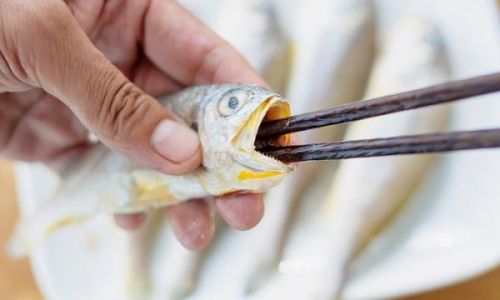Cleaning a fish’s internal organs is an essential task for anyone who enjoys fresh, homemade fish dishes. Whether you’re a seasoned chef or a beginner in the kitchen, mastering this skill can significantly enhance the taste and safety of your fish preparations. While it may seem daunting at first, with the right techniques and tools, you can efficiently clean a fish in a matter of minutes. This guide will walk you through the step-by-step process, ensuring that you handle the fish with precision and care.
Understanding the Importance of Cleaning Fish
Before diving into the specifics of how to clean a fish, it’s crucial to understand why this step is indispensable. Cleaning a fish involves removing its internal organs, scales, and any other unwanted parts. This not only improves the aesthetic appeal of your dish but also ensures food safety.
Fish can harbor parasites, bacteria, and other contaminants in their guts and on their skin. Proper cleaning minimizes the risk of food poisoning and other health issues. Additionally, removing the internal organs and other parts like the gills and fins helps to eliminate strong odors and flavors that can overpower the delicate taste of the fish.
Preparation Before Cleaning
Before you start cleaning your fish, ensure you have the necessary tools and a clean, well-lit workspace. Here’s a checklist of what you’ll need:
- Sharp Knife: A sharp, flexible filleting knife is ideal for making precise cuts.
- Fish Scaler or Spoon: This helps to remove scales efficiently.
- Cutting Board: A sturdy, non-slip cutting board is essential for safety.
- Paper Towels or Clean Cloths: For wiping away blood, slime, and scales.
- Bowl or Sink: Filled with cold, clean water for rinsing.
- Gloves (Optional): If you’re sensitive to fish slime or scales, wearing gloves can make the process more comfortable.
- Trash Bag: For discarding the internal organs and other waste.
Choosing the Right Fish
The type of fish you’re cleaning will influence the specific steps you take. Some fish, like trout or salmon, have relatively easy-to-remove organs, while others, such as flatfish like flounder or sole, require a bit more finesse due to their unique shape.

When selecting a fish, look for firm, moist flesh with bright, clear eyes and red or pink gills (depending on the species). Avoid fish with dull eyes, slimy skin, or a strong, unpleasant odor, as these are signs of freshness issues.
Step-by-Step Guide to Cleaning Fish Internal Organs
-
Rinse the Fish
Begin by rinsing the entire fish under cold, running water. This helps to remove any surface dirt, slime, or scales that might have come loose during handling. Pat the fish dry with paper towels to prevent slipping while you work.
-
Scale Removal
If the fish is scaled, use a fish scaler or the back of a dull knife to gently scrape off the scales in the direction opposite to the scale’s growth. Be careful not to cut into the flesh. For fish with very fine scales, like some types of trout, you might not need to remove them at all, especially if you plan to skin the fish later.
-
Prepare the Fish for Opening
Place the fish on the cutting board with its belly facing you. Use a sharp knife to make a shallow cut just behind the gills, running from the head to the vent (the anus, located near the tail). This cut will allow you to access the internal organs.
-
Removing the Gills

With your fingers or a spoon, gently pull out the gills. They should come out fairly easily, but be careful not to tear them, as this can release more slime and blood into the fish. Discard the gills in the trash.
-
Opening the Fish
Make a deeper cut along the line you previously traced, cutting through the belly from head to tail. Be careful not to cut through the backbone. Once you’ve made the cut, lay the fish flat on the cutting board, opening it like a book.
-
Removing the Internal Organs
With your fingers or a spoon, carefully scoop out the internal organs. The organs are typically clustered together in a cavity called the coelom. You’ll want to remove the:
- Heart: Often found near the gills.
- Liver: A large, dark-colored organ. Depending on the fish, the liver can be quite large and should be removed carefully to avoid tearing it.
- Stomach and Intestines: These are usually connected and can be pulled out together. Be mindful of any contents that might spill out, as they can be messy and smelly.
- Reproductive Organs: These are located near the vent and can vary in size and appearance depending on the sex and reproductive cycle of the fish.
Discard all internal organs in the trash. If you plan to keep the liver for cooking (some fish livers, like those of salmon, are considered delicacies), ensure it’s free of any blood or other contaminants.
-
Removing the Black Membrane (Optional)
Some fish, particularly those with darker flesh, have a thin, dark membrane lining the inside of the body cavity. This membrane can have a strong, bitter taste and is often removed for better flavor. Use a spoon or the edge of a knife to gently scrape it off.

-
Rinsing and Inspecting
Rinse the fish cavity thoroughly under cold water to remove any remaining blood, slime, or organ fragments. Inspect the fish carefully to ensure all organs have been removed and that no scales remain inside the cavity.
-
Pat Dry
Use paper towels to pat the fish dry, inside and out. This helps to remove excess water and ensures that your fish will cook more evenly.
-
Skinning (Optional)
If you prefer your fish without the skin, you can remove it at this point. Use a sharp knife to make a shallow cut just below the lateral line (a dark stripe running along the side of the fish), then gently peel the skin away from the flesh.
Final Thoughts and Tips
- Practice Makes Perfect: Like any skill, cleaning fish becomes easier with practice. Don’t be discouraged if your first few attempts aren’t perfect.
- Use a Sharp Knife: A dull knife is more likely to slip and cause injury. Keep your knife sharp to make clean, precise cuts.
- Work Quickly: Fish flesh can start to break down if handled too roughly or for too long. Work efficiently to minimize damage to the fish.
- Dispose of Waste Properly: Always dispose of fish waste in a sealed trash bag to prevent odors and attract pests.
- Store Properly: Once cleaned, fish should be stored on ice or in the refrigerator to maintain freshness.
By following these steps, you’ll be able to clean a fish’s internal organs efficiently and effectively. Whether you’re preparing a simple grilled fish or a more complex fish dish, knowing how to clean your fish properly will enhance its flavor, texture, and overall eating experience. Enjoy your culinary adventures with fresh, clean fish!





0 comments